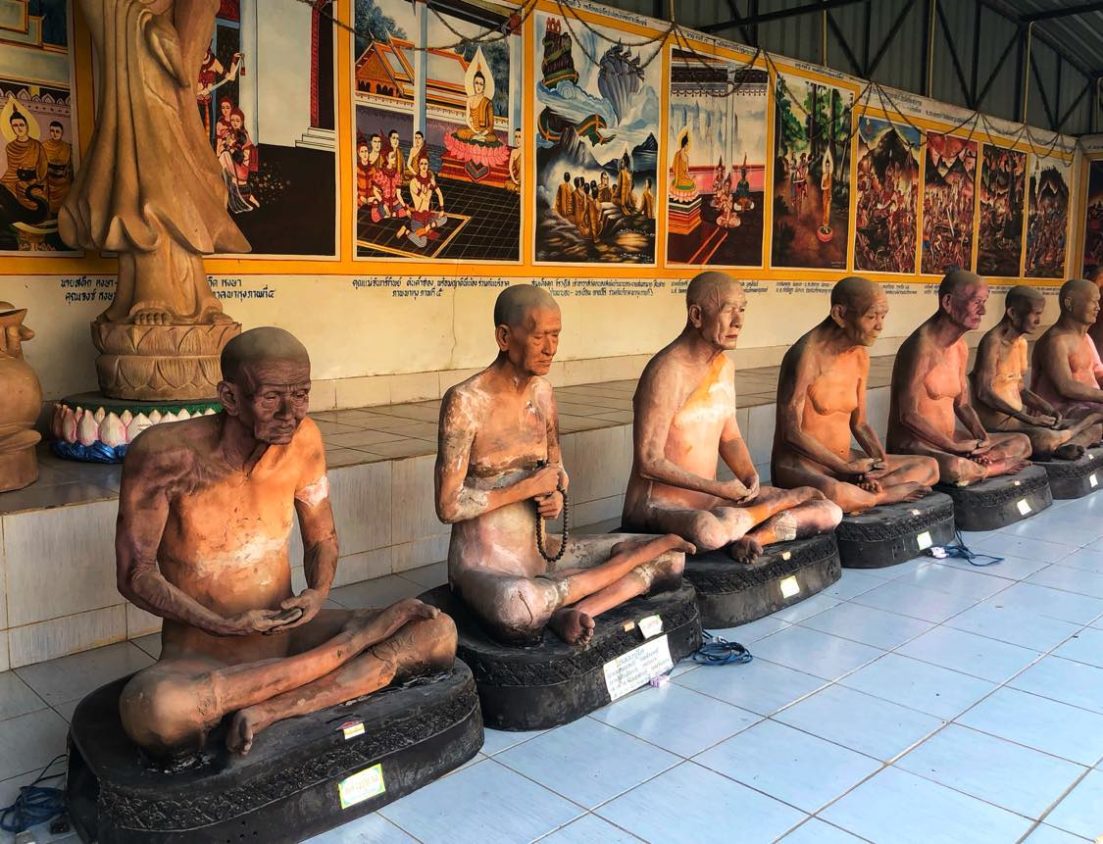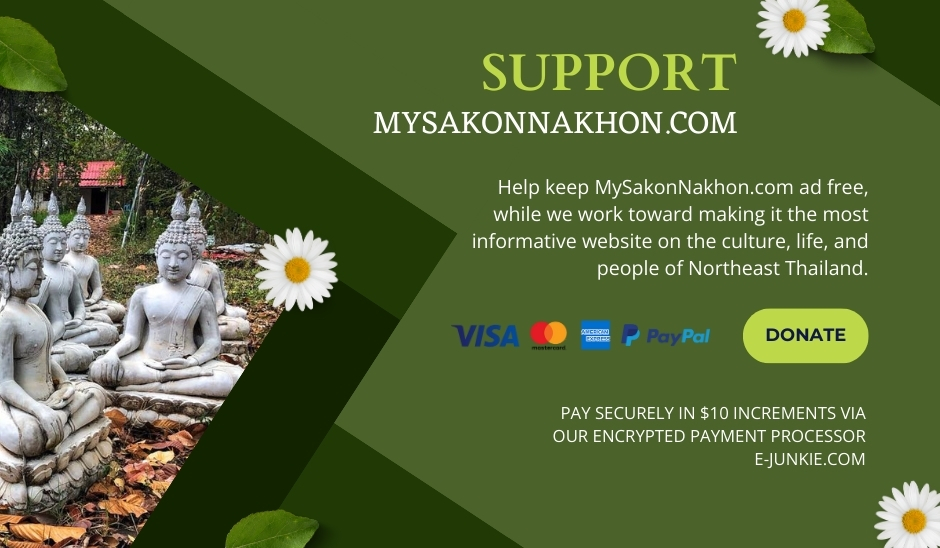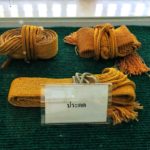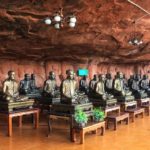
Naked Thai Buddhist Monk Statues Without Robes

The Isan temples of Northeastern Thailand have some of the most curious histories, statues, and monks in all of Thailand. Previously we wrote about Sakon Nakhon’s Luang Pu Sorn Paphassaro, the only long-haired Buddhist monk in Thai history. Today, we introduce you to perhaps the only statues of revered Thai monks, where the monks have been stripped of their robes and are presented almost completely naked.
This series of “naked” Buddhist statues appears at Wat Mahatat (วัดมหาธาตุ), the oldest Isan temple in the Chiang Khan district of Loei province. In our more than 150 Thai temple visits, this is the first time that we have ever seen statues of Thai monks without their robes. Nor have we been able to find any others after an exhaustive online search. So, these almost-naked statues may indeed be the only ones of their kind in Thailand.
When one considers the tenets of Buddhism, these unrobed statues at Wat Mahatat are not that unusual, for the scene would seem to represent that these monks had achieved enlightenment, had been stripped entirely to their divine essence, and here sit naked, in meditative posture, much like Adam and Eve of the Christian tradition.
So, who are these 11 monks displayed in such unusual fashion for a Thai temple? They all are Thai monks of high esteem in Thailand, including both Isan monks from Northeastern Thailand and revered Thai monks from outside Isan. For example, the only smiling monk in the group is Luang Pu Chop (หลวงปู่ชอบ), a well-known Isan monk from Loei who (like so many Isan monks) spent much of his time wandering the forests of Loei and Isan. It is said that his isolation in the deep Isan woods allowed him to see many mysterious things that ordinary people cannot see, such as angels, the Hindu gods Indra and Brahma, Yaksha giants, serpents, ghosts, demons, and even the thoughts and feelings in the hearts of people.
Then there is Buddhist monk who is holding prayer beads. This is Luang Phor Dto or Somdej Toh (หลวงพ่อโต), one of the most widely known monks in Thailand, who lived during the late 18th and 19th centuries. It was said that he possessed a range of supernatural abilities, such as clairvoyance, telekinesis, and the ability to communicate with spirits. He create sacred amulets that were believed to offer protection and good fortune to those who wore them. These amulets continue to be highly sought after by people in Thailand and other parts of Southeast Asia.
Thai Monk Robes
You’ll notice that all of the Thai monk sculptures are expertly crafted, with the naked torso’s shaded and colored to illustrate the areas where the monks’ robes had been worn. A Thai monk is to wear a robe at all times except when sleeping and bathing. A monk’s robes are called a Kasaya, are saffron (yellow-orange) in color and consist of three main pieces:
Uttarasanga, which is the upper robe or outer cloak worn by a monk. It is made of a large rectangular piece of cloth that is draped over the left shoulder and under the right arm, leaving the right shoulder and arm exposed. The robe is then gathered and folded across the front of the body, and the loose ends are tucked under the left arm.
Antaravasaka, which is the inner robe worn by a monk. It is made of a rectangular piece of cloth that is wrapped around the body and tied at the waist with a belt or sash.
Sanghati, which is an additional outer robe worn by Thai monks. It is made of several rectangular pieces of cloth sewn together and draped over both shoulders, with the edges gathered and held in place with a belt or sash at the waist. The Sanghati provides extra warmth and protection from the elements, which is especially important for Isan forest monks during the cool season.
We hope this post will help art lovers to realize that Isan temples are literally sacred art galleries that have endless amounts of intriguing things to see, especially if you are ready to go off the beaten path in Thailand.
- The Royal Ploughing Ceremony in Thailand – A History - May 8, 2024
- Dying Well the Buddhist Way in Thailand - May 7, 2024
- Comforting Words for the Brokenhearted in Thailand - May 6, 2024




